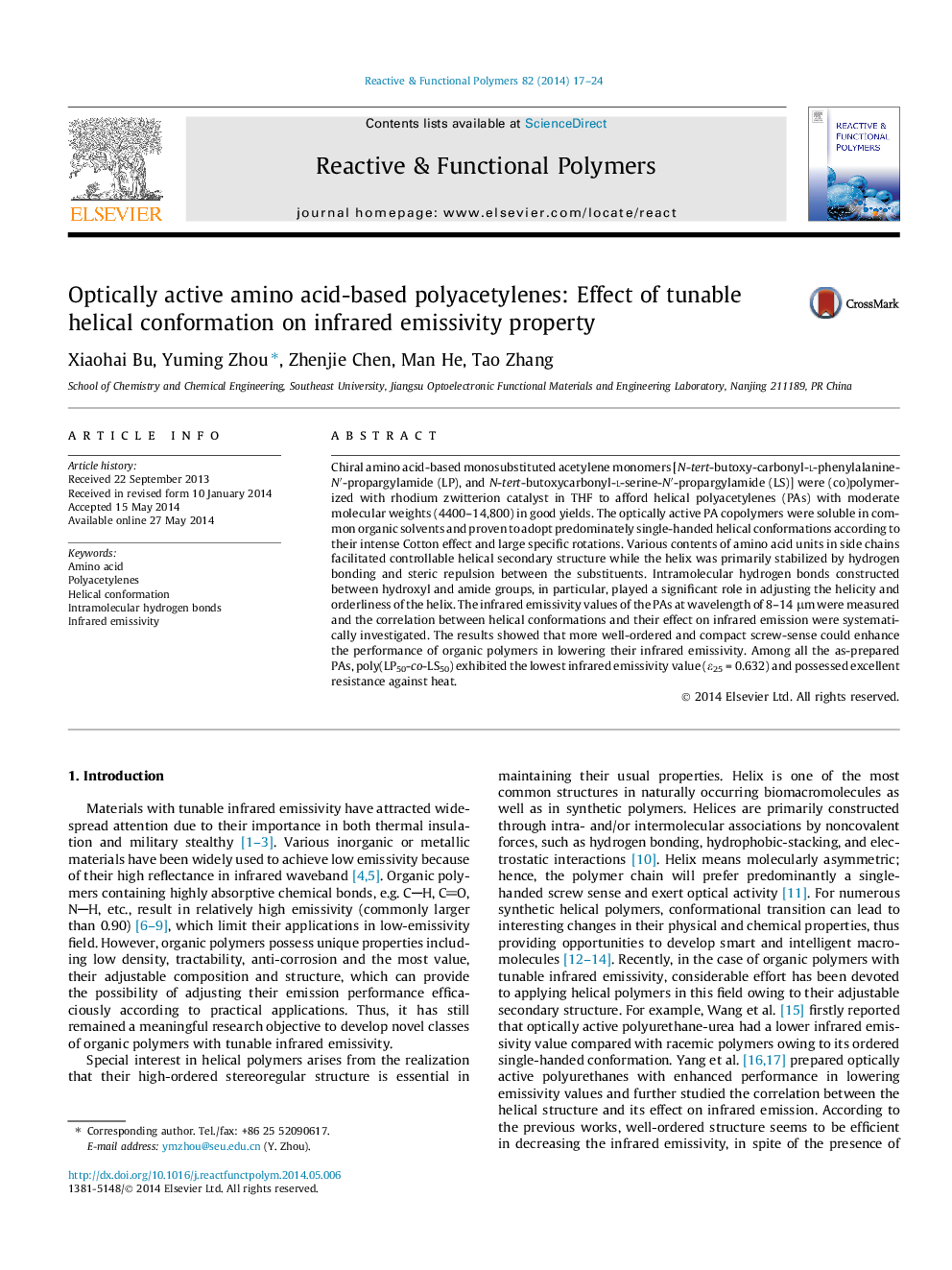| Article ID | Journal | Published Year | Pages | File Type |
|---|---|---|---|---|
| 5209806 | Reactive and Functional Polymers | 2014 | 8 Pages |
â¢Synthesis and characterization of amino acid-based PAs.â¢Investigation of helical structure of amino acid-based PAs.â¢Application of PAs in lowering infrared emissivity.
Chiral amino acid-based monosubstituted acetylene monomers [N-tert-butoxy-carbonyl-l-phenylalanine-Nâ²-propargylamide (LP), and N-tert-butoxycarbonyl-l-serine-Nâ²-propargylamide (LS)] were (co)polymerized with rhodium zwitterion catalyst in THF to afford helical polyacetylenes (PAs) with moderate molecular weights (4400-14,800) in good yields. The optically active PA copolymers were soluble in common organic solvents and proven to adopt predominately single-handed helical conformations according to their intense Cotton effect and large specific rotations. Various contents of amino acid units in side chains facilitated controllable helical secondary structure while the helix was primarily stabilized by hydrogen bonding and steric repulsion between the substituents. Intramolecular hydrogen bonds constructed between hydroxyl and amide groups, in particular, played a significant role in adjusting the helicity and orderliness of the helix. The infrared emissivity values of the PAs at wavelength of 8-14 μm were measured and the correlation between helical conformations and their effect on infrared emission were systematically investigated. The results showed that more well-ordered and compact screw-sense could enhance the performance of organic polymers in lowering their infrared emissivity. Among all the as-prepared PAs, poly(LP50-co-LS50) exhibited the lowest infrared emissivity value (ε25 = 0.632) and possessed excellent resistance against heat.
Graphical abstractDownload full-size image
